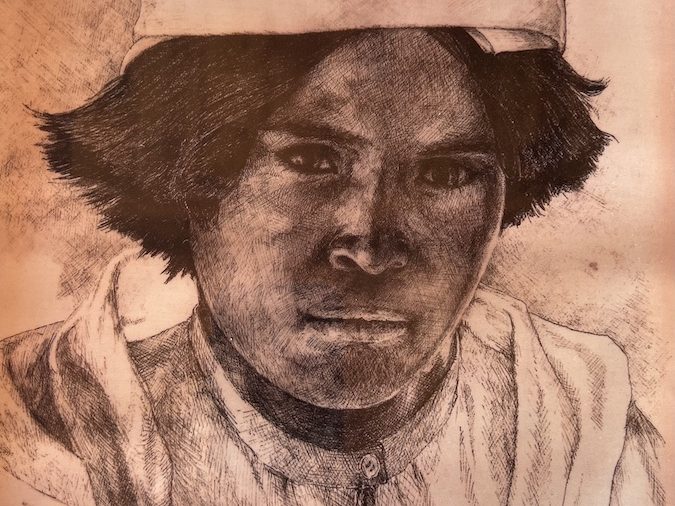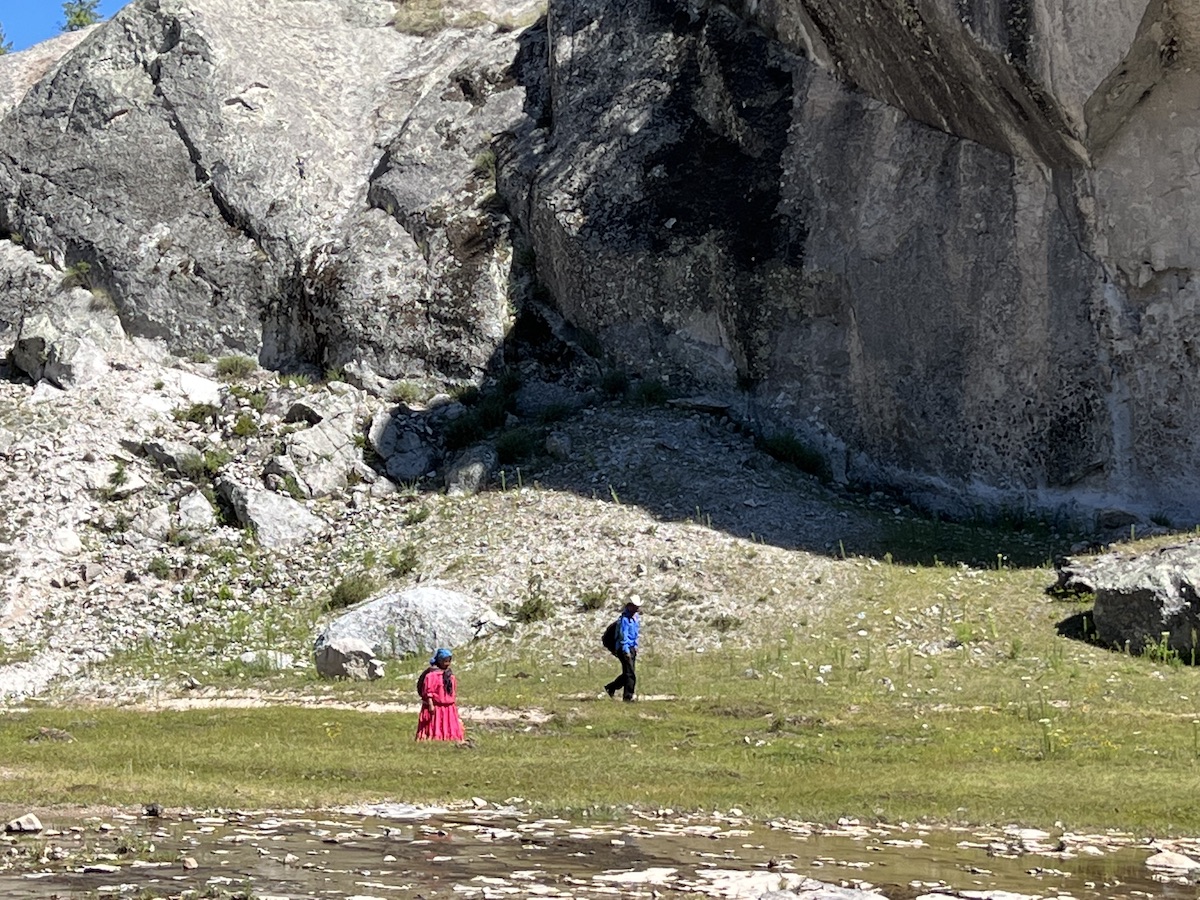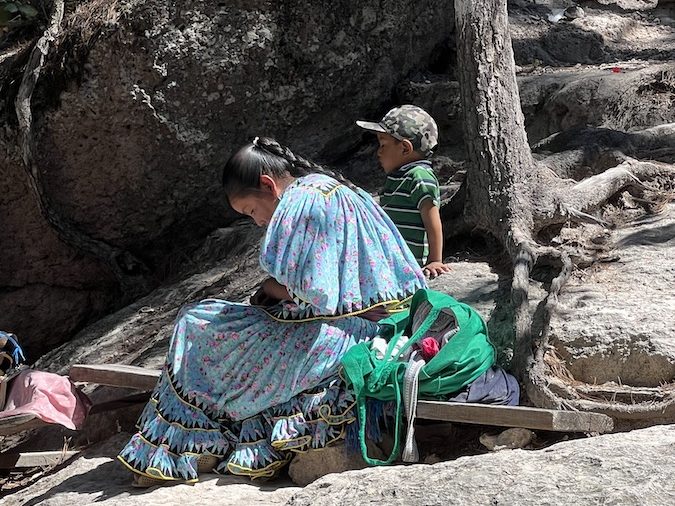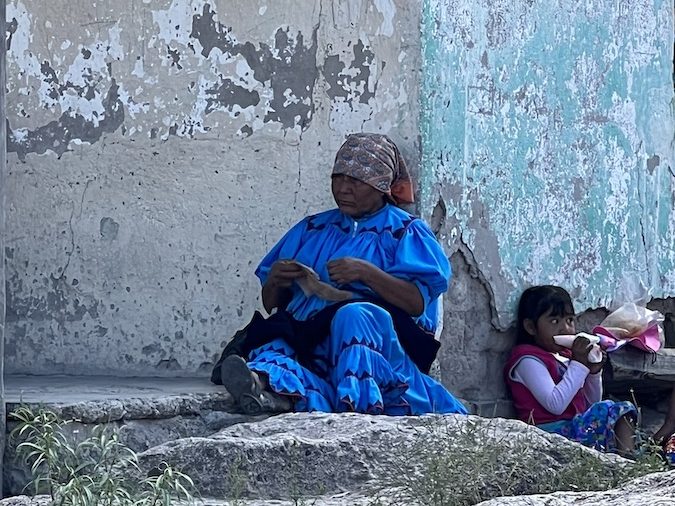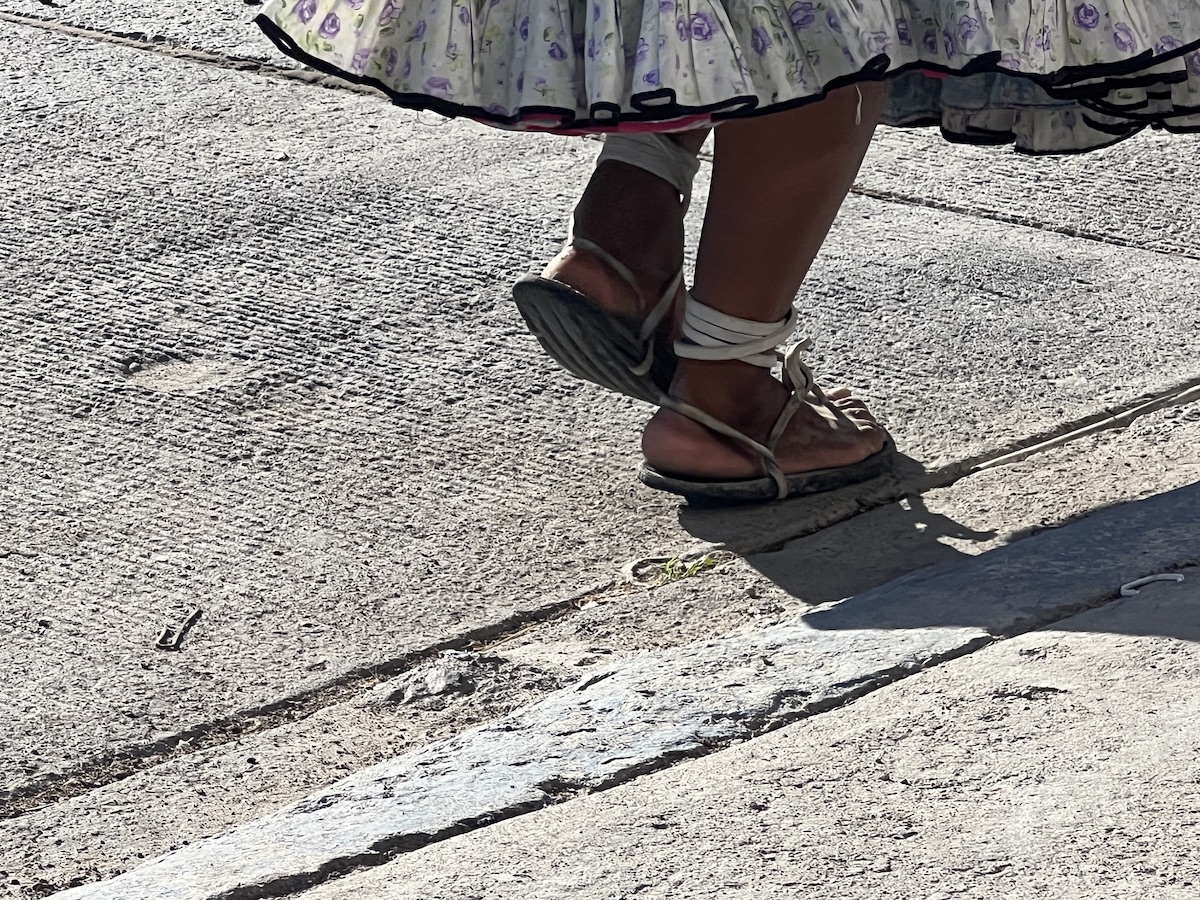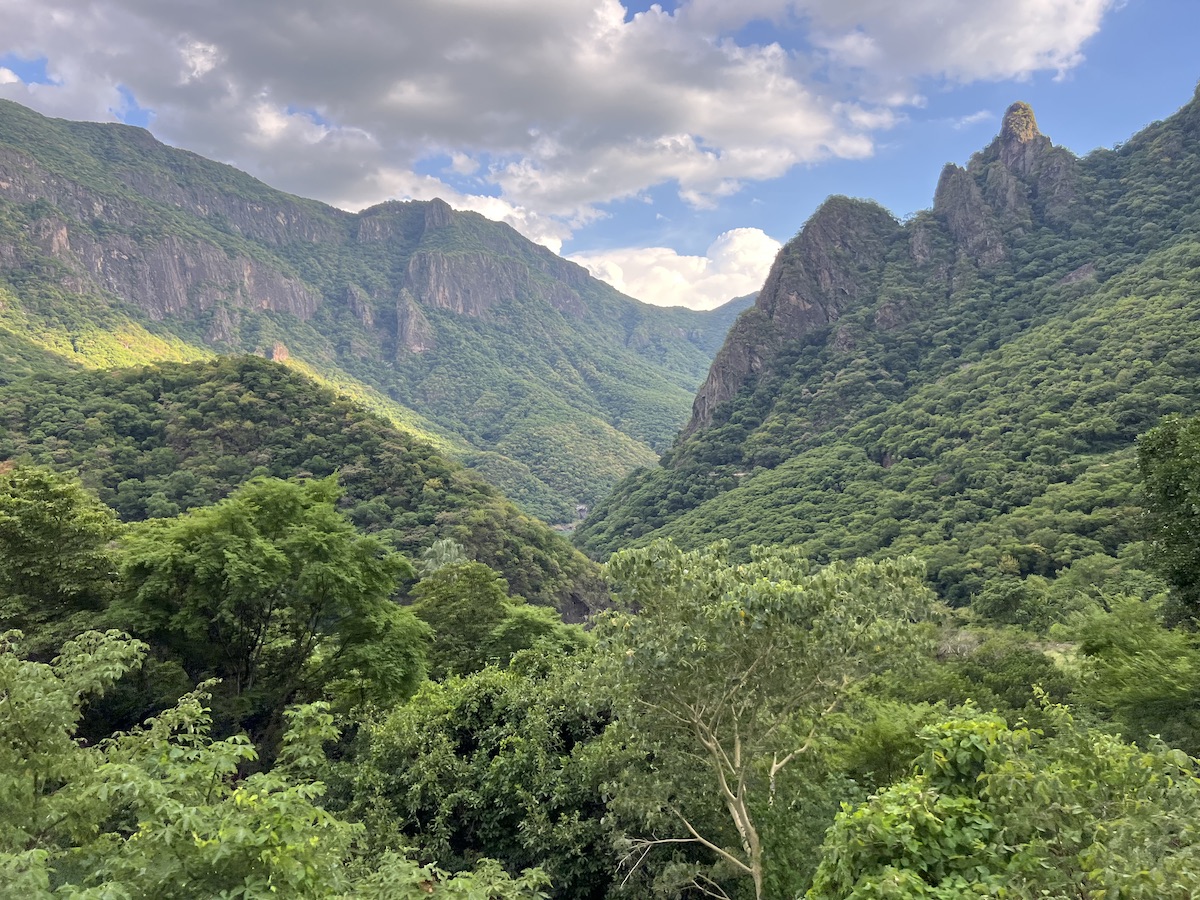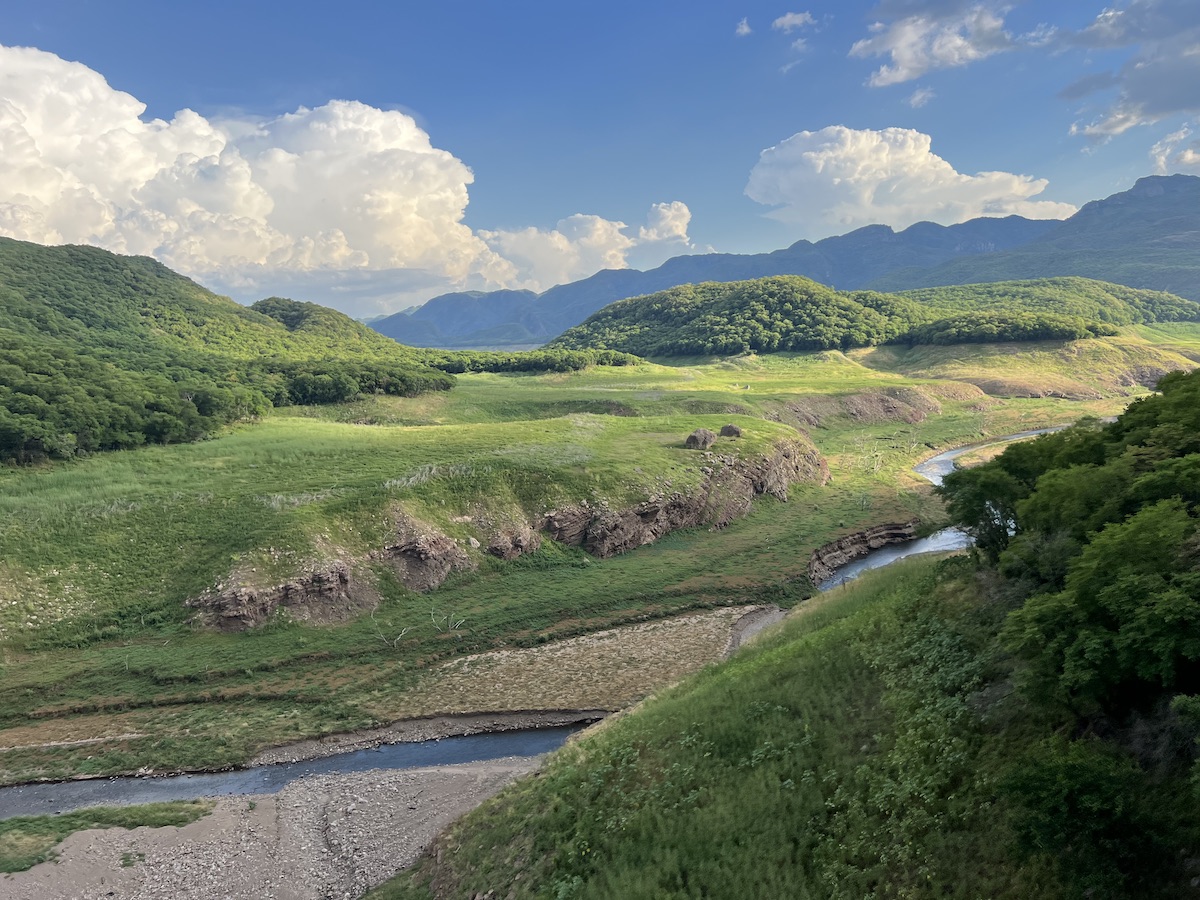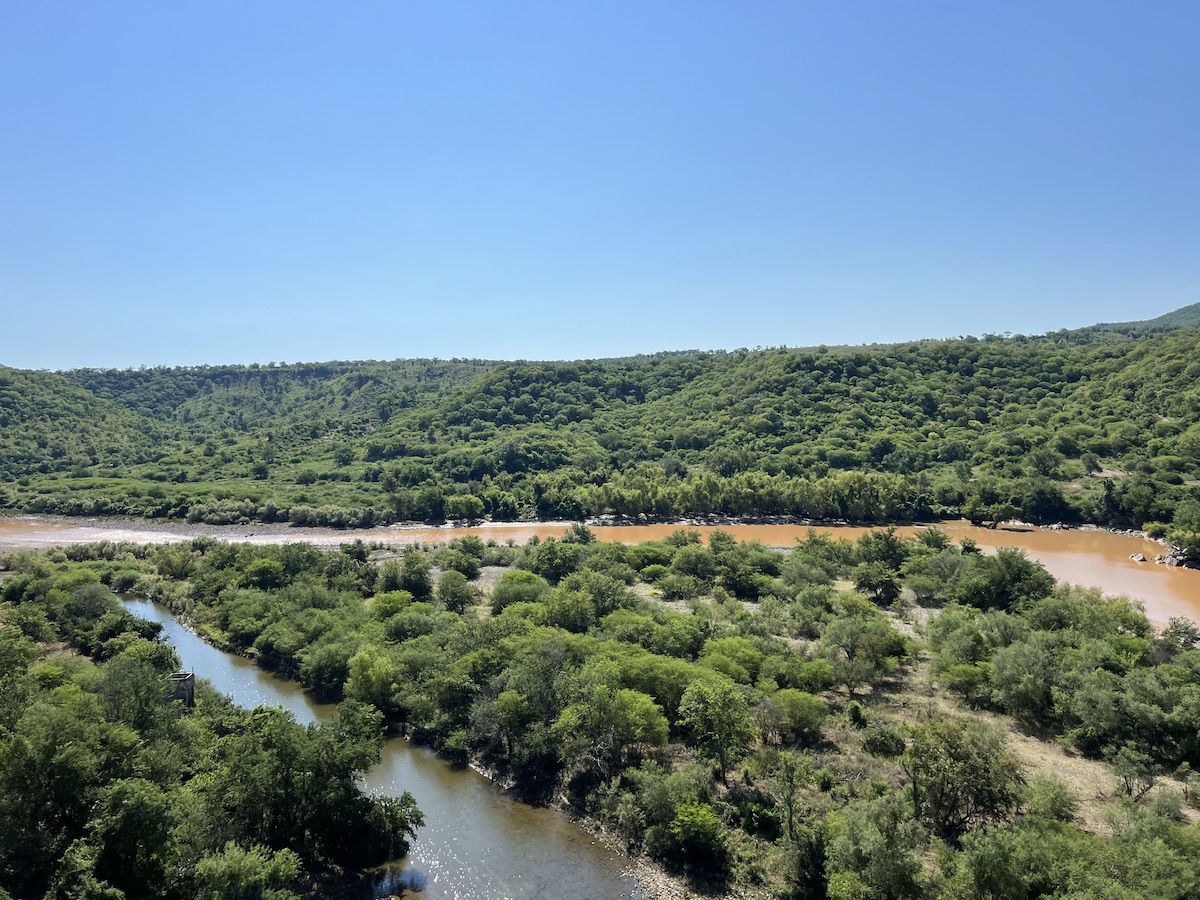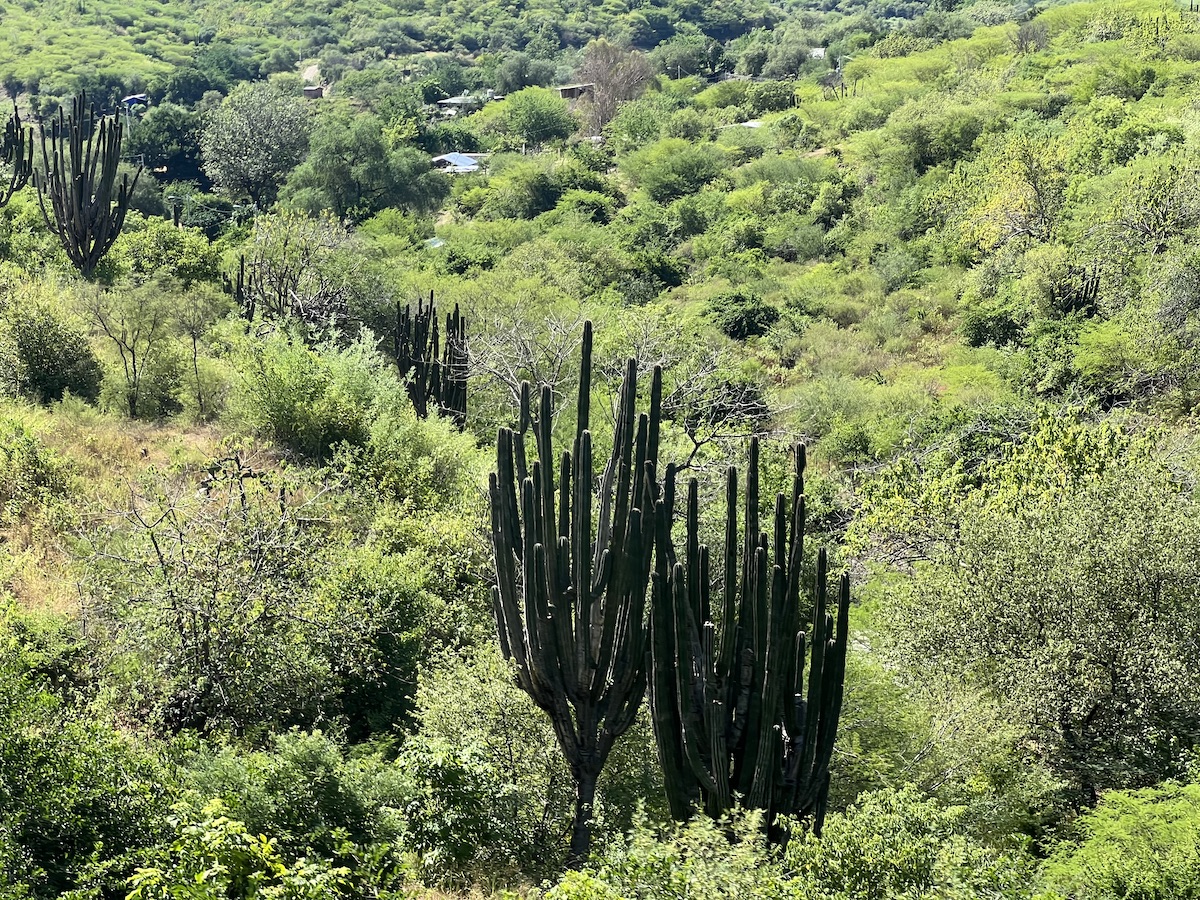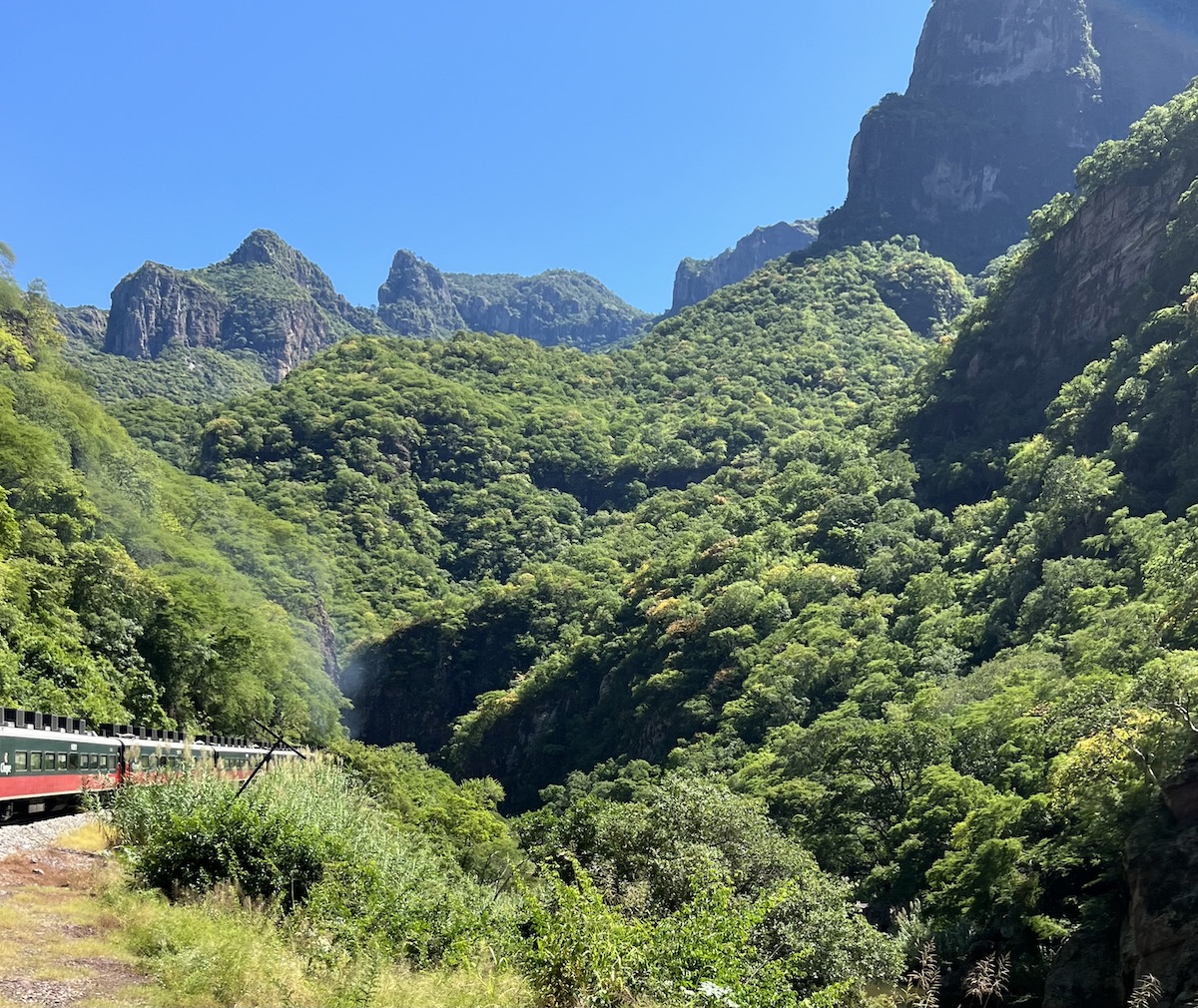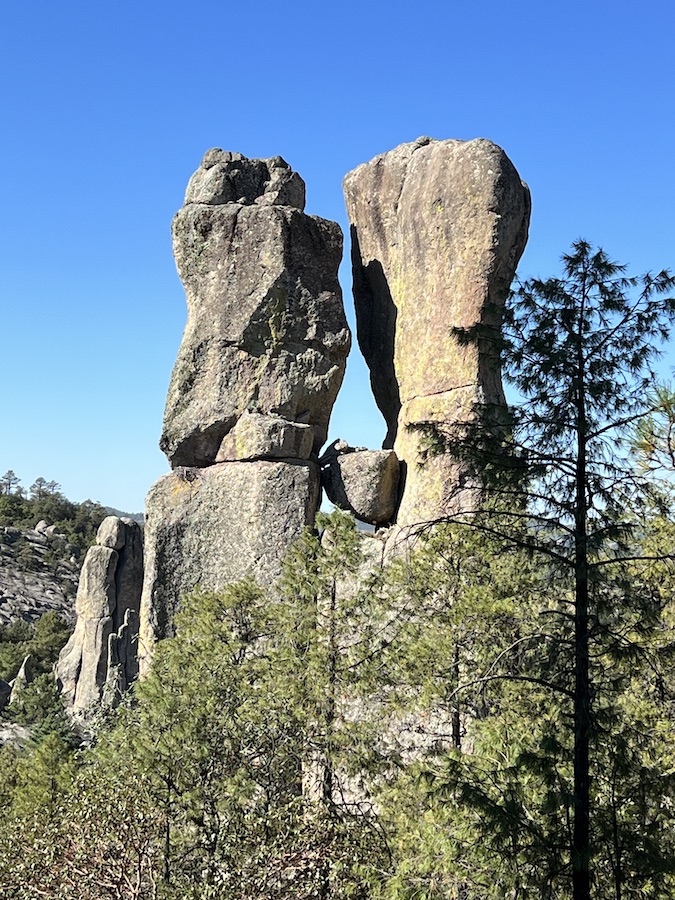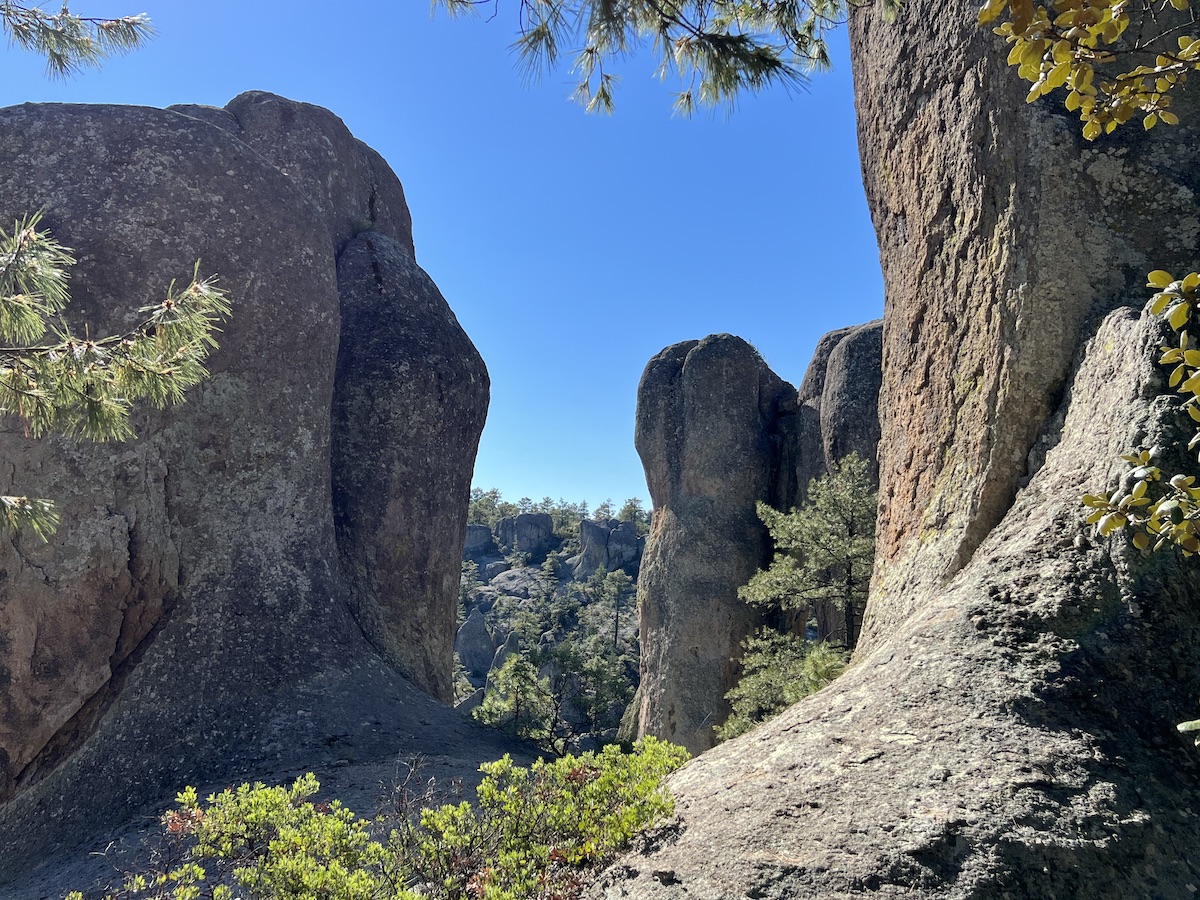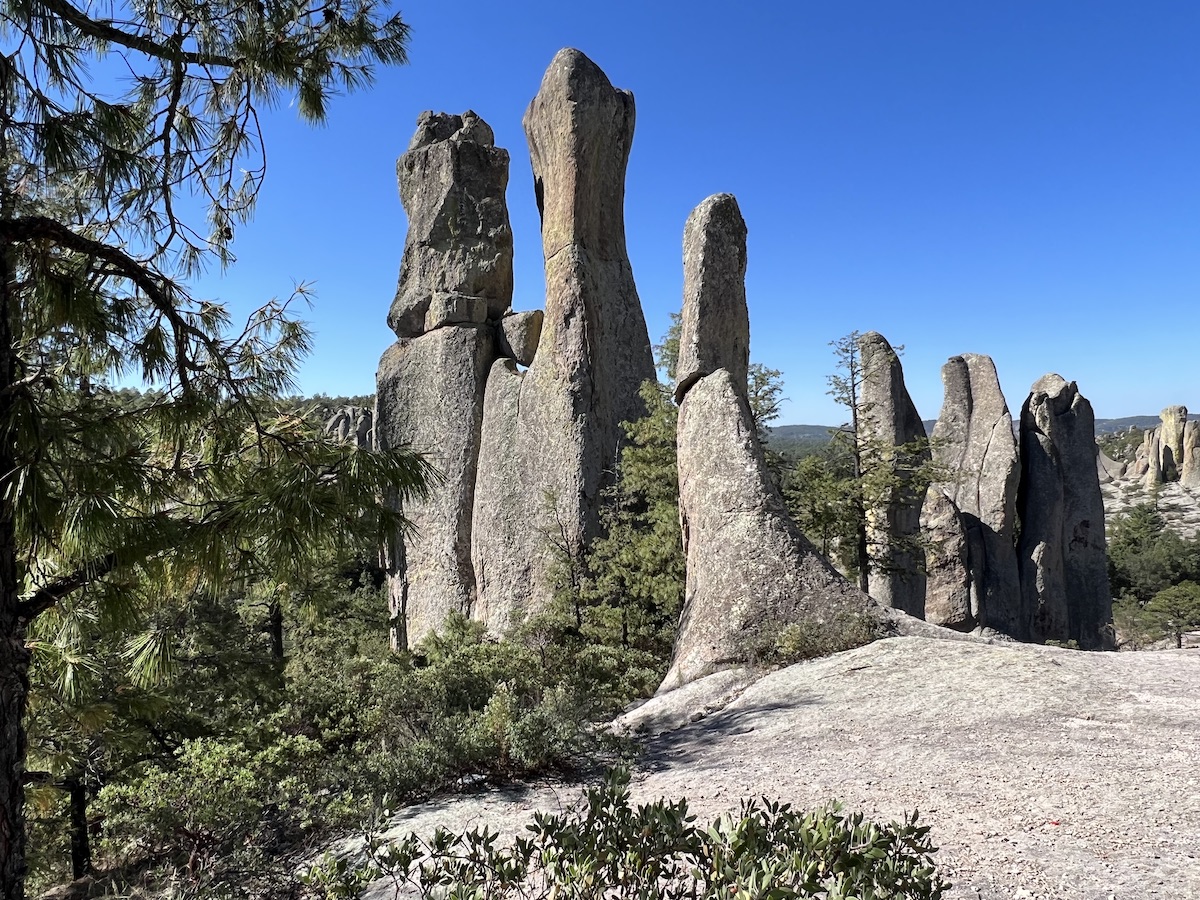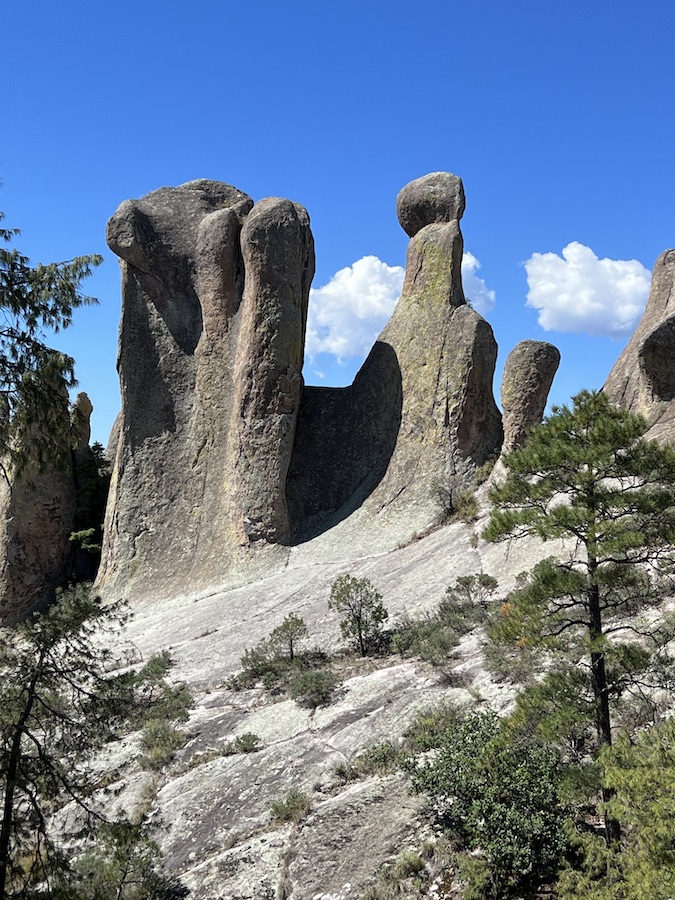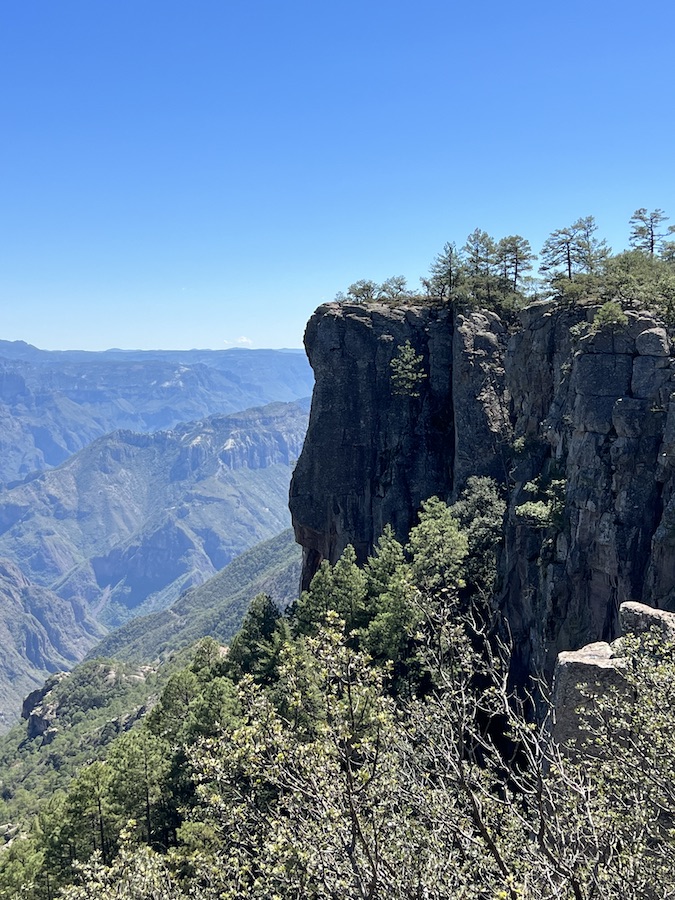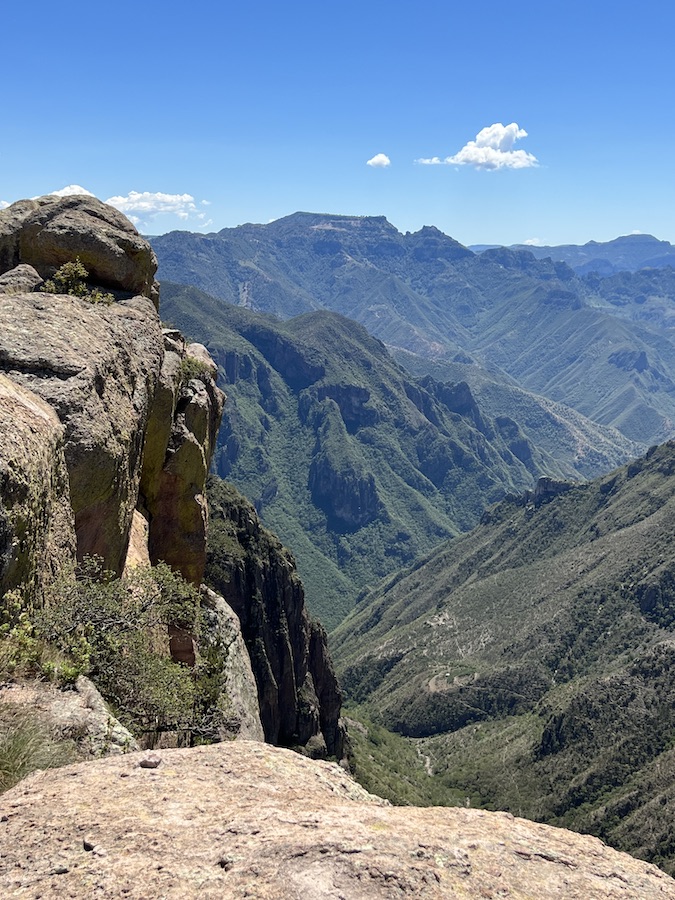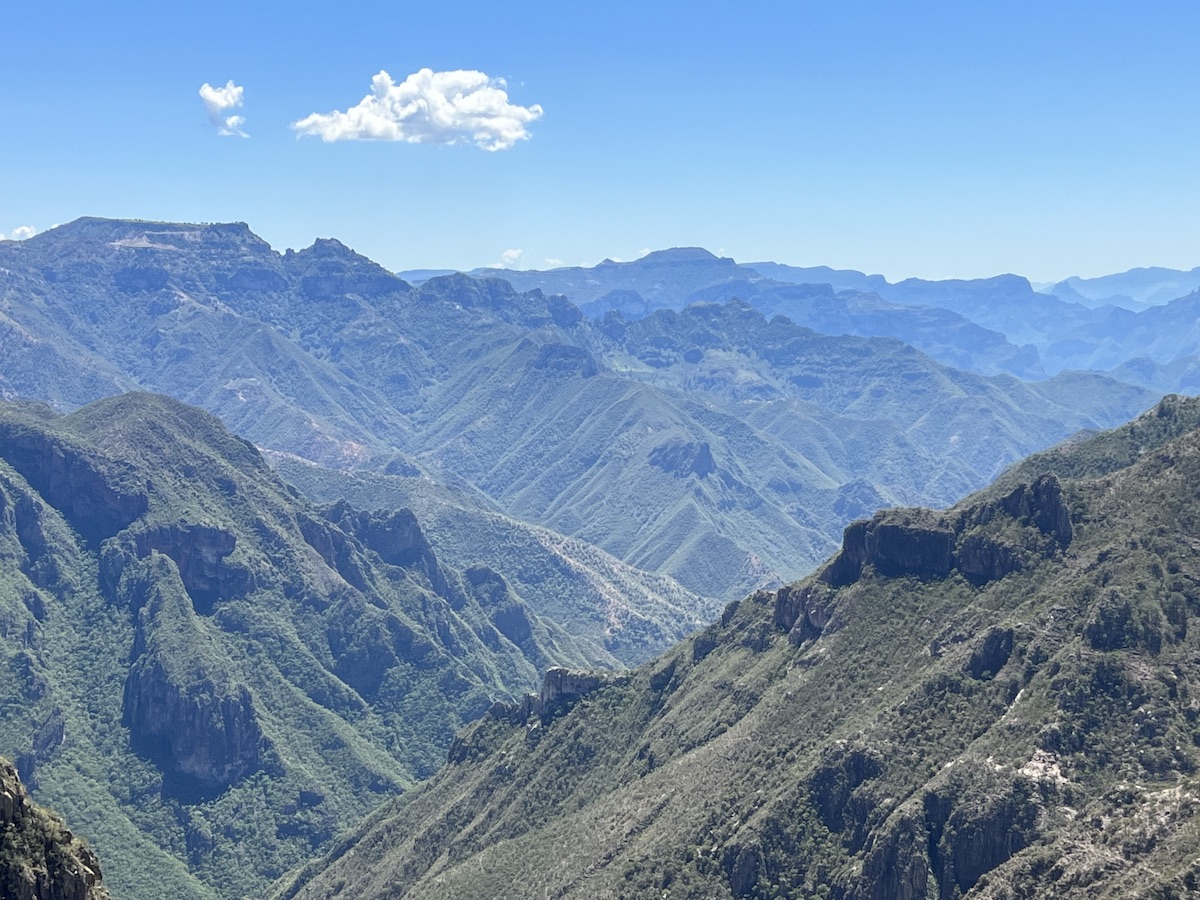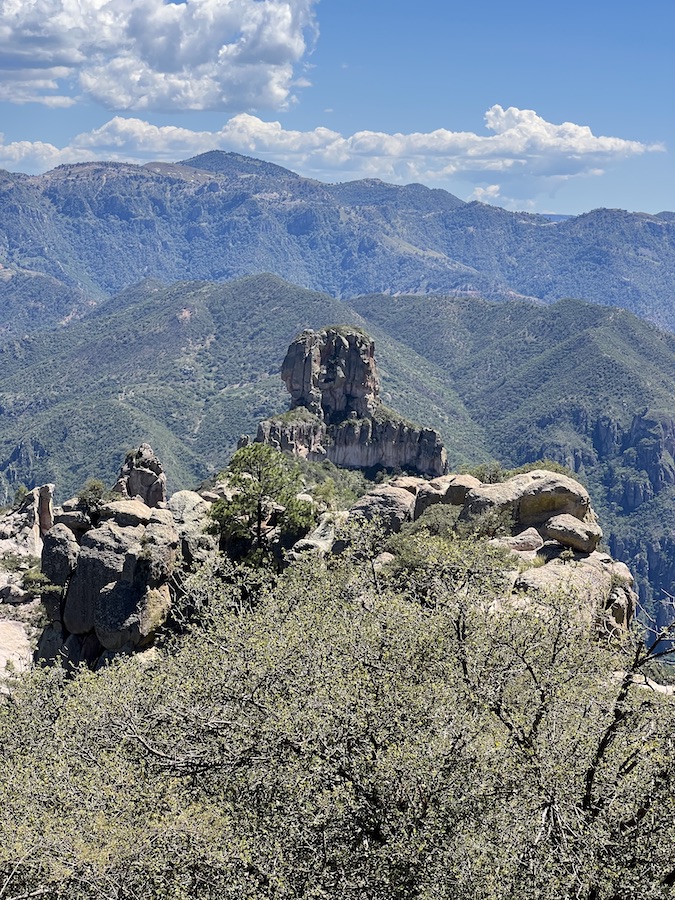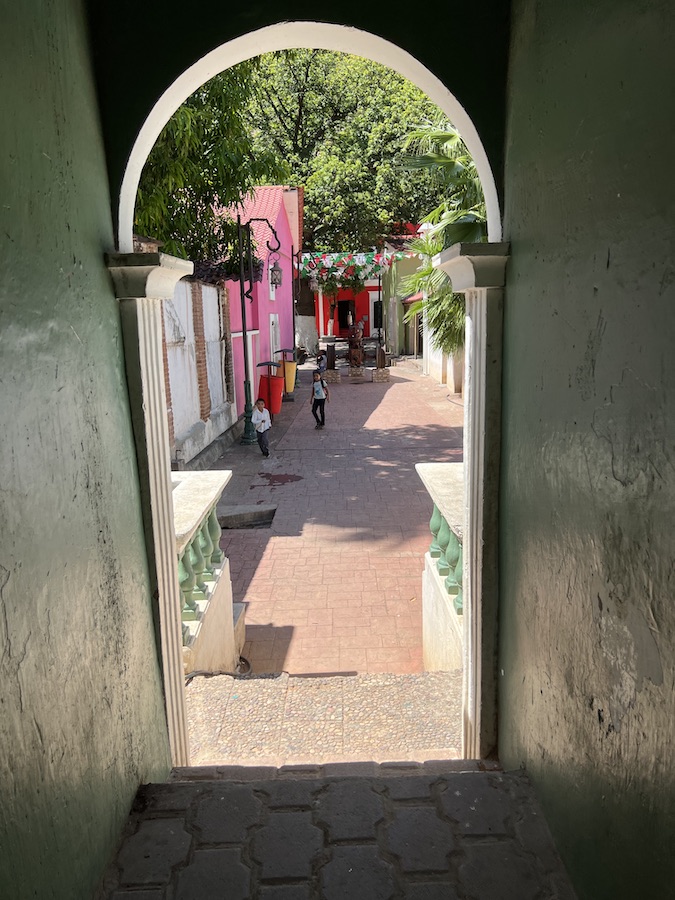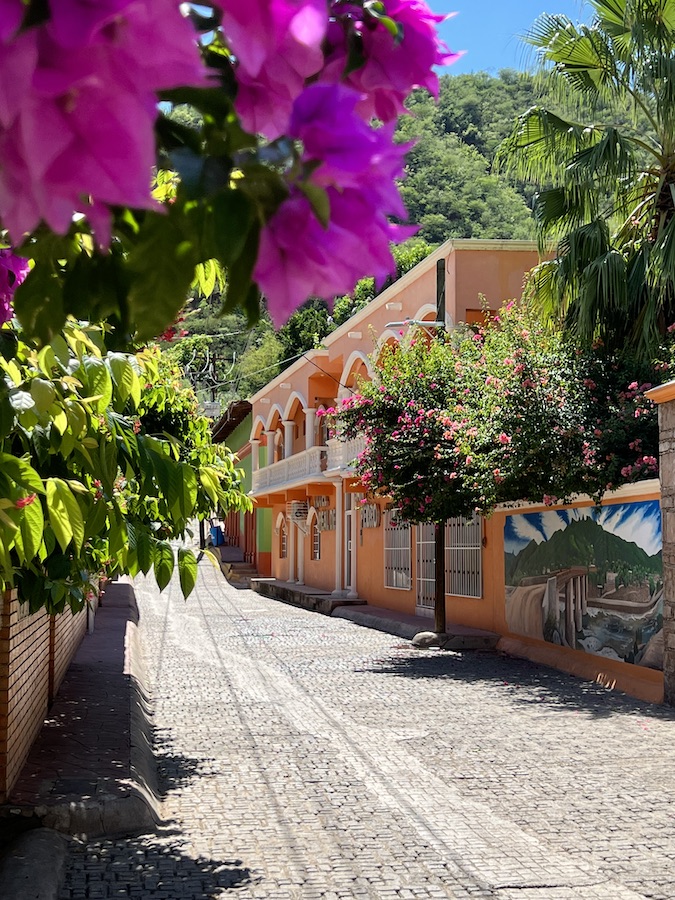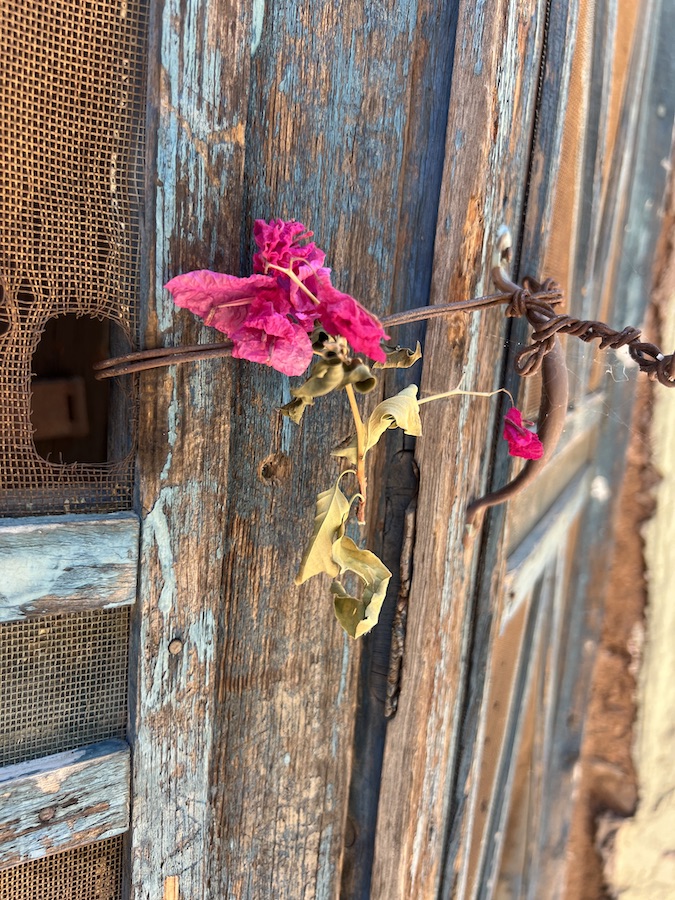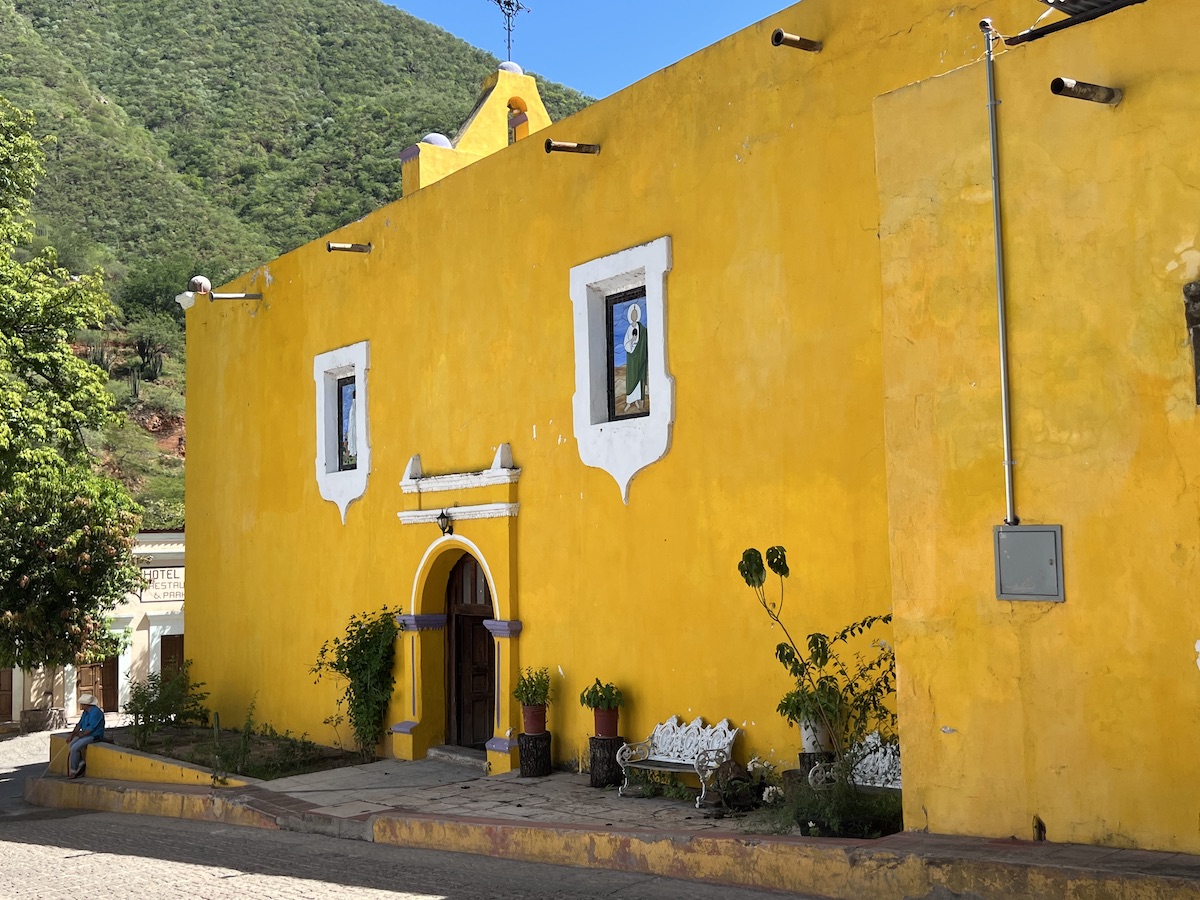
The Nomad is a series of stories, fascinations, encounters, observations, experiences, joy of the moments by me, Ulrike Reinhard – all around my travels. Stay tuned!
Ulrike Reinhard is The Nomad 🙂
hkjasdhJK
… at the brink of mass tourism
It was in the mid eighties when I first took the train “El Cheppe”. I entered Mexico in Tijuana and made slowly my way down to the southern edge of Baja Calfiornia. There was a ferry in La Paz crossing the Bay of California and reaching “mainland” Mexico in Los Mochis. The ferry is still running today. Los Mochis – as they would say – is the western gateway to the Copper Canyon. Back then it was a small Mexicon town. It was exceedingly hot and humid. And it was hard to find a decent place to stay. They weren’t prepared for tourist yet.
Los Mochis is the starting point of the El Cheppe – the train running through the incredible landscpae of the Copper Canyon, climbing up 2500m elevation, passing through three different kind of flora and fauna regions until it reaches the high plains of the Sierra Madre. A rocky area filled with pine trees. The temperature on the top is decent and always cools down significantly during the nights. Pleasant.
Many people say that this train journey ranks among the top 10 of all the train journeys on this planet.
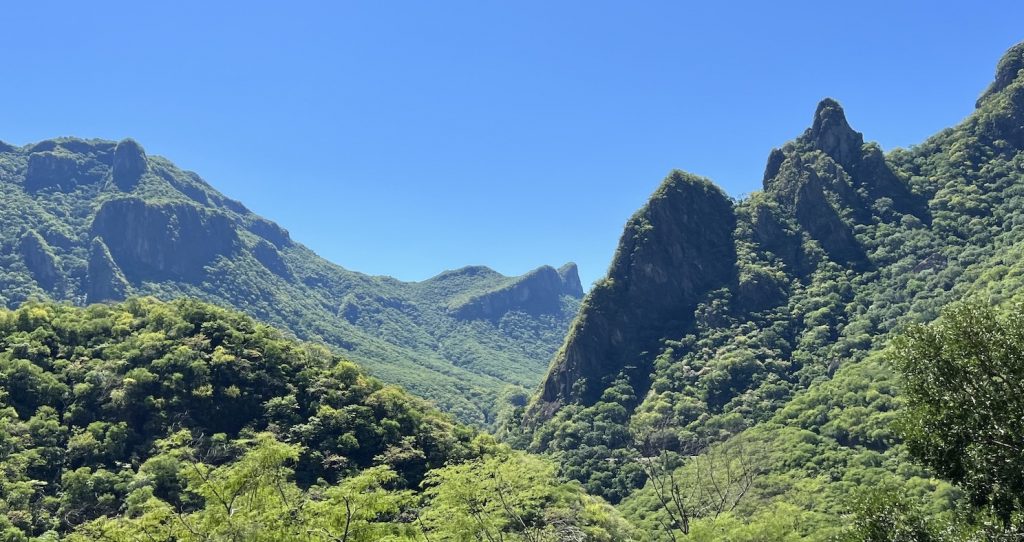
Entire Urique Canyon, one of the 3 big canyons in this area, coming from Los Mochis
The El Cheppe is the fastest way to cross this huge mountain range and to reach Chihuahua on the other side. The area is five times as big as the Grand Canyon (AZ) in the US, and the valleys are much deeper and much greener than they are in Arizona. Chihuahua is the eastern end of the train. The journey took 14 hours back then. It was a local train connecting the small villages inside the mountain range. It was very local back then. The seats were wooden benches and the train was packed. It was loud, vibrant and very colourful. You could hear the sound of the train from the far distance. El Ceppe was back then the only way one could reach the next valley – unless you walk. There were a few unpaved roads, it were mainly hiking trails leading from one village to another.
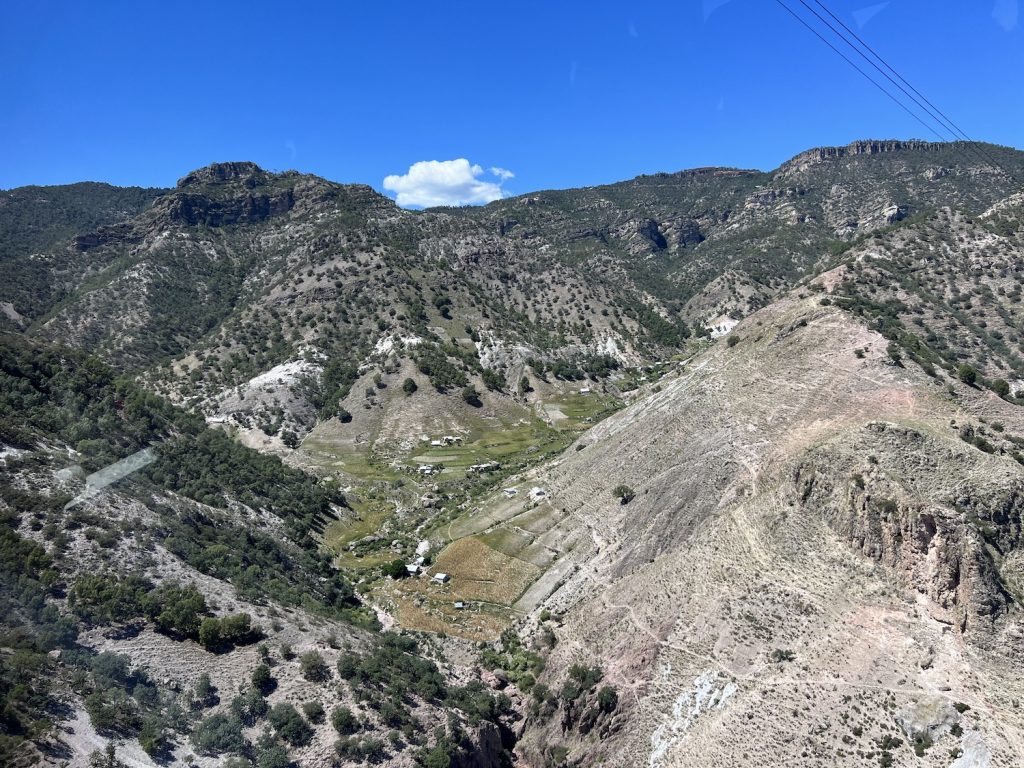
View into one of the valleys at Divisadero; you can see the houses
El Cheppe crosses the land of the Tarahumara people – or Rarámuri, how they call themselves. It is one of the largest indigenous tribes in North America with 90,000 – 100,000 people. The majority are concentrated in the highlands of the Sierra Madre and some of them have chosen to live in las barrancas – the gorges of the Sierra Madre. They are renowned for their long-distance running ability.
The Spanish conquistadors have driven the Tarahumara from their nomadic existence on Chihuahua’s fertile plains 500 years ago. And over the past century, lumber companies, miners, tourist development and drug traffickers have pushed them deeper into the steep pine forests of the sierra, where farming land is scarce and corn crops often fail. Just like this year – the harvest is very bad. Many of the Rarámuri still raise cattle sheep, and goats.
Most Rarámuri practised a traditional lifestyle, including inhabiting natural shelters (caves or cliff overhangs) back then. And they wre migrating from one place to another during the course of a year. This has changed. While a few still live in caves in secluded canyons, today you see more very simple houses throughout the valleys and some people have moved into the villages, which have grown a lot over the last years.
The women are dressed in very colourful clothes, and many are still wearing a headscarf. It is hard to see man in their traditional clothes which used to be a white triangled skirt. Many of the women are selling handicrafts today at the various tourist spots which are scattered throughout the valley. It is the Tarahumara people who controll this land, provide access to their sacred places and sell their products. What they sell is mostly: flutes, basketery, hair ribbons, handicrafts made out of wood, minerals and stones, necklaces, bracelets …. it is pretty much the same where ever you go.
This time I came from the Chihuahua side.
Their life is very tough, they don’t have water in their houses, they usually have huge tanks somewhere around their house which are filled up with water – if water is available. Water has become scarce – the region is going through a severe drought since a few years. Not enough rain. Most of the waterfalls are tiny trickles and most of the riverbeds are empty. Child mortality is among the highest in the world here. A staggering 40%.
It is very cold during the winters up in the Sierra Madre (down to minus 15 degree Celsius) – so the people suffer extremely during this time. They leave the high plains then and head back into the canyons and have to eat whatever they can find, including mice, roots and reptiles. Government health care is hardly reaching them. But also the Tarahumara have a different concept of illness, as something to be cured with ceremonies and natural remedies, an anthropologist told me, who has worked with the Tarahumara for 20 years.. Quite some people die during winter time from hypothermia, malnutrition and cold-related diseases. Alcohol is creeping into their festivities to replace their less-potent traditional fermented corn drink Tesguino.
Despite all of this, most of the Tarahumara stick with their live style – they want to resist Western life style which is getting closer and closer to them, because of tourism.
jkljölkölkjökl
Creel – Another Tourist Hub
This time I came from the Chihuahua side. This is where the El Cheppe train starts in the east and makes it way up into the Sierra Madre. It is at Creel where the really scenic part begins (see below). So I decided to take a local bus up to Creel which became my “basecamp” for the next two weeks. It was a six hour bus ride (180 km) from Chihuahua, because it stopped at every tree 🙂 As a senior citizen I only paid 184 MXN (9 USD), the regular price is twice as much.
Now, there is also an airport in Creel, 6 km outside the town. It will start operating in th elast quarter of 2023. The decision is made to make Creel the tourist destination for the Copper Canyon. It is the central spot in the Sierra Madre, it is reachable by train and bus.
Creel is a small town with roughly 5000 people at an altitude of 7,350 feet. It is surrounded by pine forests and the high plains of the Sierra Madre with the most stunning rock formations. There is one main road which is running through town and ends at the railway station around which all tourist attractions are centered. Hotel next to hotel – there are more than 40 hotels in this little town. Souvenir shop next to souvenir shop, restaurant next to restaurant and most of them not really good. It is very hard to find good and most of all fresh, healthy food in Creel. And there are at least 20 places where you can hire cross country bicycles, motorbikes and these so-called quatros, open kind of jeeps with oversized tyres, which basically roll everything flat and need a lot of petrol to run. Horrible monsters, so to speak. But bring good money.
Just like food and rentals, everything is slightly overpriced – there is no soul in this town. It has sold its soul to tourism and the possibility to make money – no matter what. And what they deliver is surely not up to the notch.
I felt there is a huge chance missed!
There are NO plans to safeguard nature and the culture of the Tarahumara people. It is all based on plundering the resources. A group of university professors from Chihuahua and some environmental activists are ringing the alarm bells. I learned that the municipality is prioritizing the hotels with the water supply. It easily happens that private households don’t get ANY water, because the hotels need it all. Waste is another big issues. The amount of plastic and all kind of waste in the plains and valleys is frightening. The Tarahumara people are pushed back further into the valleys making their lives even harder. A few are in town, trying to get their share of the big tourism cake. They offer “authentic” Tarahumara experiences and showcase in a cheap way how their culture used to be. They drive tourists to staged set ups and tell them: “This is how we used to live!”. Very suoerficial.
Three families “own” the biggest share of the tourism cake and control it. They raise the bars for any newcomer and demand pay back.
Twice a day two huge military tanks loaded with 10 soldiers each in full gear patrol the place. Assuring the tourists: “You are safe!” The road and the train down to Los Mochis is a main route for drugs going into the US.
This all sounds horrible, and it is. It could have been done so much better.
Batopilas (see below) is a much better example.
I was there mid September which is low tourist season, lucky me. During my two weeks I only met one couple from Switzerland, all the other tourists, who weren’t many, were Mexicans. I stayed in a small hotel “La Torje de Adobe” two blocks off the railway station. It was a very clean, small room (maybe 15 sqm) with decent wifi. It costed 800 MXN (approx. 40 USD). It is run by a couple, he is speaking English – the owner of the place is living somewhere else. The host most definitely is a nit-picker and all his math is depending on the calculator. He is friendly and polite, but surely his understanding of service has its very own limits. Why would he have a phone number of the taxi driver when the taxi is everyday at 9 or 10 am at the same spot at the train staion?
I managed to avoid the tourist traps and explored the beautiful landscape which is surrounding Creel mostly by hiking and by going short distances with a local taxi guy. Longer distances I did by local bus or train. See a few tips below.
The moment you are out of Creel things change. There are a few tourist knots where people are “crowded” like the Casarare waterfalls, the Lake Arareco and the old church in San Ignacio – but the moment you leave these places behind, the magic starts. You can dive into the wide plains with their colourful flowers and into the valleys – you will meet no one. And you get a feeling how the people really live and make their living. Along these trails there are only Tarahumara people. You see them farming and taking care of their cattle. Or just sitting on one of the huge rocks and starring over the land.
The air is fresh and clean. The sky deep blue. The insects are twirling, thousands of grashoppers jumping around and the wind making its very own sound around the rocks. I felt so tiny within this scenery, so miniscule and it made me once again aware that we are only here for a blink of an eye – so I better use the time and do the best I can to keep such rich and exceptionally beautiful places intact.
jsdhlkas
El Cheppe – The Train
The main attraction is certainly El Cheppe – the train which connects Chihuahua – Creel with Los Mochis at the Golf of California. There two trains.
One is the “local” train – that’s the one I took. It runs on Wednesdays and Saturdays westbound, and on Thursdays and Sunday eastbound. It akes 14 hours when you do the entire strech, I only did Creel-El Fuerte (the stop before Los Mochis) and back. It is the most scenic part and it takes 6-7 hours. On this train they offer three classes:
- tourist class comfortable seats, toilets, carpet on the floor
- economy: just like tourist, just no carpet but half price. I’ve paid 800 MXN (40 USD) one way.
- local: in this class no foreigners are allowed. it is the cheapest class.
And then there is the very expensive fancy tourist train. It was under maintenance in September when I was there and restarted its schedule on October 1.
The local train has a “restaurant” coach where you get good coffee and basic food. And every one and then local merchants come on the train to sell their local products. I bought freshly harvested apples and delicious cheese.
3-4 heavy aremd soldiers are on board and patrol from coach to coach.
The time went fast on the train because there is always something to see. I don’t know how many bridges we crossed and how many tunnels we drove through. Often I could touch with my hands the rocks and trees along the track. The route is in very good shape and every now and then we would see a construction team on the side who keep the train running.
Hikes
There are plenty of trails you can hike. Here are three one should do, because they give you very different impressions of the area.
Valley of the Monks – Vallee de los Monjes
It is 9 km from Creel, mainly on an unpaved road. Taxi going there is 300 MXN (15 USD). Spent an entire day there, it is a magic place, and I walked back to Creel – it won’t take you longer than 2.5 hours.
Walk along the rim at Divisadero – you can either take the train from Creel or a bus. The train takes two hours, the bus one. There is one bus per day in each direction. The train is running twice a week. From Creel it runs on Wednesdays and Saturdays.
I was on my way back from Los Mochis and I got out at Divisadero and stayed for one night at a hotel with quite a spectacular view. Food was horrible, but the view breathtaking 🙂
The hike along the rim is maybe 45 minutes if you do take time and it brings you right to ca cable car which was only a few years ago installed. You can take the cable car for 300 Pesos (15 USD) and it brings you in the middle of Copper Canyon. You get quite a good feeling that you are in a canyon.
Batopilas – a very old village (1600 hundreds) at the bottom of Copper Canyon. It is nicely restored, has a touch of “kitsch” yet has managed to remain authentic. People act within their and natures boundary and don’t overdo. You eat in peoples’ kitchens the food they eat. And you see a lovely mix of Tarahumara people and Mexicans. It seems to be at eyelevel.
It is absolutely worth going there, because within 20 km you see the flora/fauna changing as you descend down to the river. You can also opt and get out at the rim and walk down. This is what I did. But you do need a guide for this – otherwise you will get lost. The hike is 6-7 hours.
It is very remote. There is a bus three times a week from Creel to Batopilas; it takes 3.5 hours and costs 400 MXN (20 USD); it is a minibus and is leaving from the center of town. At Batopilas the road ends.
Useful links:
El Cheppe – don’t take the fancy tourist train, go local. Even on the local train you do not need to book the double priced tourist ticket, economy is pretty much the same than tourist class. Same seats, same space, same toilettes, the only difference is that the tourist class has a carpet.
Limosines Mexico for buses from Santa Fe/ El Paso to Chihuahua – comfortable new buses which bring you anywhere in the Sierra MAdre where there is a road. They have half price for seniors 🙂
Local buses into the Sierra Madre
Creel – the tourist hub

